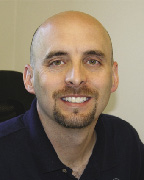Infrared-imaging (thermography) technology is used as a diagnostic tool to instantly visualize and measure the thermal energy emitted by an object and in this case a building material. Front Line uses thermal imaging to detect temperature changes in building materials that are hidden to the naked eye. This technology allows contractors and owners "to see" problems that would otherwise require more time consuming and or disruptive methods of identification. Thermography technicians are called upon to; scan walls, floors, roofs and other areas inside and outside of the building envelope. Objectives of these scans include: detecting overloaded electrical wiring or circuits, pinpointing roof leaks and water damaged materials, and working with engineers to identify insulation deficiencies in ceilings and exterior walls.
Front Line is currently completing a two month project scanning the ventilation shafts in two 40 story Boston condominium buildings. The purpose of this scan is to identify major air migration from the ventilation shafts prior to Aero Seal application. Hot air is introduced into each shaft under pressure. The thermal image camera is then used to scan the surrounding walls and ceilings looking for hot spots or streaks outside of the actual shaft. By pinpointing these "leaks" the contractor is able to patch holes before injecting the glue mist that might otherwise "blow out" into occupied units causing expensive clean up and possible property damage.
More and more area contractors are using thermal technology to document the absence of problems as well as identify problems. Front Line technicians are often seen on area projects scanning interior structural components and documenting the "dryness" of the building materials during the construction process.
Jeff Allen heads the moisture and thermal imaging division of Front Line, Hopedale, Mass.
Tags:
Front Line uses infrared-imaging technology to diagnose problems for GCs and property owners
April 15, 2009 - Construction Design & Engineering
 (1).jpg)








.png)